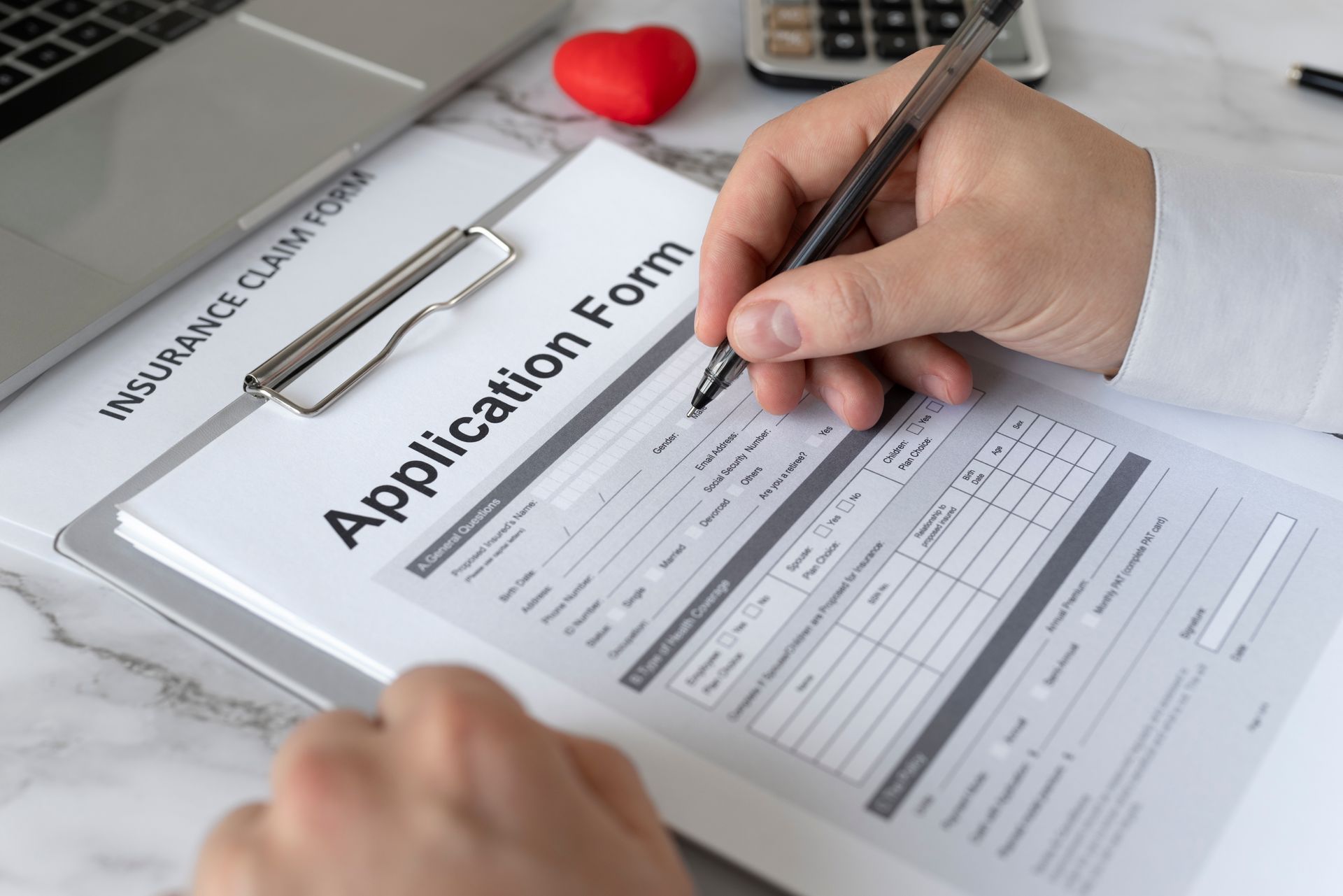Understanding the Bridging Open Work Permit in Canada: A Comprehensive Guide
Navigating immigration policies can be challenging, especially when transitioning from temporary to permanent residency. One key tool for managing this transition is the Bridging Open Work Permit (BOWP). This guide provides everything you need to know about the Bridging Open Work Permit, including who qualifies, who doesn’t, and how you and your family can continue to work in Canada while waiting for your Canadian Permanent Residence to be approved.

Introduction to Bridging Open Work Permits
A Bridging Open Work Permit (BOWP) is an essential resource for foreign nationals who have applied for permanent residence in Canada and want to continue working while their application is under review. This open work permit BOWP allows individuals to maintain their temporary resident status and legal authorization to work, even if their original work permit has expired or is about to expire. By holding a valid work permit or being under maintained status, applicants can support themselves and their families by continuing to work during the transition from temporary resident to permanent resident. To qualify for a bridging open work permit, you must have already applied for permanent residence under an eligible economic immigration program and be physically present in Canada. BOWPs are only available to inland applicants, meaning you must be applying from within Canada. The BOWP ensures that foreign nationals do not face unnecessary interruptions in employment while waiting for a decision on their application for permanent residence, making it a vital bridge to achieving Canadian permanent residency.
What is a Bridging Open Work Permit (BOWP)?
A Bridging Open Work Permit (BOWP) is a unique type of temporary work permit designed to help foreign nationals continue working in Canada while their permanent residence (PR) application is being processed. The main purpose of the bridging open work permit BOWP is to provide a seamless transition for individuals who have applied for permanent residence under eligible economic immigration programs, such as Express Entry, the Provincial Nominee Program, or other federal streams.
With a BOWP, you are not tied to a specific employer, which means you can work for any employer in Canada and even change jobs or locations, unless your permanent residence application imposes specific restrictions. Be careful changing employers if your PR application involved a job offer. The open work permit is typically valid for up to two years, giving you the flexibility and security to keep working in Canada while you wait for a decision on your permanent residence.
Essentially, this Canadian work permit “bridges” the gap between the end of your current work permit and the final decision on your PR. Issued by Immigration, Refugees and Citizenship Canada (IRCC), the Bridging Open Work Permit (BOWP) allows foreign nationals to continue working legally in Canada without the employer first needing to obtain a Labour Market Impact Assessment. Applications must be submitted online through the applicant’s secure IRCC account.
Who is Eligible for BOWP application in Canada?
To qualify for a BOWP in Canada, you must meet the following criteria:
- Valid Work Permit: You must be in Canada with a valid work permit, or be eligible to restore your status as a worker.
- Pending Permanent Residence Application: You must have submitted a PR application and passed the completeness check under one of the following economic immigration programs:
- Express Entry applicants:
- Federal Skilled Worker Program (FSWP) – AOR letter needed
- Canadian Experience Class (CEC) – AOR needed
- Federal Skilled Trades Class (FSTC) – AOR needed
- Provincial Nominee Program (PNP) – AOR needed (whether Express Entry or paper-based)
- Agri-Food Pilot (AFP) – Approval in Principle (AIP) letter needed
- Quebec Skilled Worker Class (QSWC) – Certificat de sélection du Québec (CSQ) and a copy of the letter with your PR application number starting with “E”
- Home Child Care Provider Pilot (HCCPP) or Home Support Worker Pilot (HSWP) – AIP letter needed
BOWPs are only available to inland applicants (you must be applying from inside Canada). Certain applicants, such as those under the PNP or Quebec Skilled Worker programs, may have specific employment location restrictions on their work permits, depending on provincial requirements.
You should have received an Acknowledgment of Receipt (AOR) or an Approval in Principle (AIP) after submitting your PR application. This is also known as a completeness check and a positive eligibility assessment. Whether you need an AOR or an AIP with your BOWP application depends on the stream.
Who Does Not Qualify for Bridging Open Work Permits?
You are not eligible for a BOWP if:
- You do not have a PR application in process: Submitting an Express Entry profile or applying to a Provincial Nominee Program does not qualify you, as these are not considered PR applications in process.
- You are exempt from work permit requirements: For example, religious visitors or business visitors working without a permit.
- You apply outside Canada: You cannot apply at a border, port of entry, or overseas visa office. Applications must be submitted from inside Canada through the IRCC online system.
- You are inadmissible to Canada for any reason.
- You do not have valid status and did not apply to extend it: You must hold a valid work permit in order to apply for a BOWP. If your permit has expired, you include an application for restoration of status with your application for a BOWP.
Family members: Only the principal applicant in the PR application can apply for a BOWP. Dependent children are not eligible. However, the spouse or common-law partner of a BOWP holder may be eligible for an open work permit under the spousal category, provided the principal applicant’s job is in a skilled occupation (TEER 0–3).
When Can I Apply for a Bridging Open Work Permit?
You can apply once you have:
- Submitted Your Permanent Residence Application: Your application must be submitted and acknowledged by IRCC.
- Received AOR: You must have received an acknowledgment of receipt (AOR) or an approval in principle (AIP), which confirms a positive eligibility assessment and indicates that your application is under review. With some application streams, the AOR is issued immediately when the application for PR is submitted. With other application streams, the AOR or the AIP can take several weeks or months to arrive once the PR application has been submitted.
It's important to ensure that your application has reached the necessary processing stages for eligibility before applying for the BOWP.
Can I Restore My Status to a BOWP?
To be eligible for a Bridging Open Work Permit (BOWP), you must apply before your current work permit expires. If you apply on time, you benefit from maintained status (previously called implied status). This means you can continue living and working in Canada legally while IRCC makes a decision on your BOWP application, even if your old permit expires during the process.
If your work permit has already expired, the situation is different. You may still be able to stay in Canada and apply for a new BOWP, but you must include an application for restoration of status as a worker with your BOWP application. The rules for restoration are:
- You must apply within 90 days of your work permit expiring.
- You must pay the restoration fee ($239.75) plus the regular work permit fee ($155), the open work permit fee ($100) and the biometrics fee ($85) if required.
- You must continue to meet the eligibility requirements for a BOWP (for example, you must have a permanent residence application in process).
- While waiting for restoration, you cannot work. Your right to work only starts again once IRCC approves both your restoration and your new BOWP.
It is important to understand the difference:
- Applied before expiry = you keep working on maintained status while waiting.
- Applied after expiry (within 90 days) = you can stay in Canada and ask for restoration, but you must stop working until approval.
If you miss the 90-day window, you are no longer eligible to restore your status from inside Canada. In that case, you would normally need to leave Canada and reapply from abroad.
Can My Spouse/ Common Law Partner/ Children Also Apply for a BOWP?
Only the principal applicant can apply for a Bridging Open Work Permit (BOWP). However, your spouse or common-law partner may qualify for an open work permit if you receive a BOWP and are employed in a skilled occupation (TEER 0–3). This is not a BOWP, but rather a spousal open work permit. Dependent children are not eligible for a BOWP. They may instead apply for a study permit or a visitor record, depending on their situation.
While your spouse, common law partner or children cannot apply for BOWP, as foreign nationals, they will still need to extend their temporary resident status before its expiry. They may be eligible to apply for their own open work or study permits under specific conditions. For them to apply, they need to:
- Be Included in Your PR Application: They must be listed as dependents of the principal applicant in your PR application - dependents include your spouse, common-law partner, and children under the age of 22.
- Meet Eligibility Requirements: They must have valid temporary resident status or be eligible to restore status and meet other criteria for their respective permits, including any maximum age requirements for dependent children.
How to Apply for a Bridging Open Work Permit
The BOWP application must be submitted online through the myCIC secure account, along with any applicable government fees. Key steps include:
- Provide Proof: Submit proof of your current work permit and your PR application in process
Supporting Documents
When applying for a BOWP, you must include the following documents:
- Acknowledgment of Receipt Letter or Approval in Principle Letter: Upload this in the “Client information” field when applying online.
- Additional Documents: Your online application portal will generate a list of forms and documents to include with your application, including a valid passport, photo and other additional documents depending on your situation.
Applicants who have not previously submitted biometrics, or those who have changed their passport since arriving in Canada, will also need to provide biometrics as part of the application process.
Bridging Open Work Permit Processing Time
- Processing Time: As of September 2025, the average BOWP processing time is 6–7 months. Processing times for BOWP applications can vary, so applicants should regularly check official IRCC updates for the most current information.
- Expired Work Permit: If your current work permit expires while your BOWP application is being processed, you can continue working under maintained status until a decision is made, as long as you submitted the BOWP application before your work permit expired, and as long as you have not left Canada since your original work permit expired.
If your application for a bridging open work permit is denied, you must stop working immediately.
Working in Canada on a BOWP
A BOWP allows foreign workers to work for any employer in Canada, except for certain jobs requiring a medical exam. However, there may be restrictions for foreign workers, such as employment being limited to a specific province or territory based on your PR application.
Bridging open work permit holders can also work for multiple employers and locations unless restricted.
However, if you plan to change employers once you receive the bridging open work permit, ensure that you are mindful of any restrictions on your employment that are a condition of your Provincial Nomination Certificate or Arranged Employment requirements for your application for PR. Although the BOWP may enable foreign workers to work for any employer, the conditions of your PR application may not.
Employment Location Restrictions
Although the BOWP is "open," your work may still be limited by:
- Conditions in your Provincial Nominee Program (PNP) (sometimes there are employer restrictions on the nomination)
- Job offer obligations tied to your PR application
So while you can technically work for any employer, check whether your PR stream limits your employment location. Be careful changing your employer if your PR application included a job offer.
Traveling and Leaving Canada with a Bridging Open Work Permit
- BOWP Travel Requirements: A BOWP is not a travel document. You must have a valid Electronic Travel Authorization (eTA) or a temporary resident visa to return to Canada if you decide to leave the country while holding a BOWP.
- Leaving Canada While waiting for a BOWP: You can leave Canada while waiting for a Bridging Open Work permit, however, if your current work permit expires and you return to Canada before your BOWP is approved, you are not eligible to return to work until the actual BOWP is issued.
FAQ
Can I change from a closed work permit to a bridging permit?
It is possible to switch from a closed work permit to a BOWP if you meet the initial eligibility criteria for applying for a BOWP.
How Long is a Bridging Open Work Permit Valid For?
- Validity: A Bridging Open Work Permit is generally valid for up to two years or until your passport expires, whichever comes first. Extensions may be possible if needed, provided that your permanent residency application is still in process.
- Extension: If your PR application is not finalized by the time your BOWP expires, IRCC may grant extensions of up to 12 months at a time.
How much does the BOWP cost?
There are 3 fees involved with a BOWP application:
The work permit processing fee of $155
The open work permit fee of $100
The biometrics processing fee of $85, applicable to those who have not submitted biometrics for a temporary application within the past ten years
Why Was my Bridging Open Work Permit Refused?
There are two common reasons for refusal of a BOWP:
- The foreign national did not qualify to apply for a BOWP in the first place - either because they do not have an application for permanent residence in process, or because their application did not reach the proper stage of processing before the BOWP application was submitted, OR
- The application for Permanent Residence was rejected as incomplete.
What happens to BOWP if my application for permanent residence is rejected?
If your application for Permanent Residence in Canada is rejected after your BOWP was issued, your bridging open work permit continues to be valid until it expires. You can continue working until the expiry date, and you can also submit another application for Permanent Residence if you are eligible to do so.
Can I extend or renew a bridging open work permit?
If your permanent residence application is still being processed when your current BOWP is nearing its expiry, you may be eligible to extend or renew your bridging open work permit. Extensions are typically granted for up to 12 months at a time, but the total validity cannot exceed the expiry date of your passport.
To apply for an extension or renewal, you must submit a new application before your current BOWP expires, ensuring you maintain your temporary resident status and uninterrupted work authorization. Your application should include all required supporting documents, such as proof of your current temporary resident status, AOR of AIP for your permanent residence application, and payment of the applicable government fees, including the work permit processing fee. Timely submission of your extension application is crucial to avoid any gaps in your ability to work legally in Canada while your permanent residence application is under review.
Conclusion and Next Steps
In summary, the Bridging Open Work Permit is a critical step for foreign nationals seeking to transition from temporary resident status to Canadian permanent residence. Understanding the eligibility criteria, application process, and documentation requirements for a BOWP can help ensure a smooth and uninterrupted path to permanent residency.
If you have a pending permanent residence application and your current work permit is set to expire, it is important to apply for a BOWP as soon as you are eligible. You can apply online through the Immigration, Refugees and Citizenship Canada (IRCC) portal, making sure to include all completed application forms, proof of payment for the processing fee, and your receipt letter confirming your permanent residence application.
By following these steps and providing all necessary supporting documents, you can maintain your temporary resident status and continue working in Canada while your application is processed. For added peace of mind, consider consulting with an immigration expert to ensure your application is complete and meets all eligibility criteria, bringing you one step closer to achieving Canadian permanent residence.
The Way Immigration as the immigration consultant in Alberta has successfully obtained Bridging Open Work Permits for thousands of clients since 2008. Contact the top immigration consultants in Calgary to ensure that your application for Permanent Residence goes smoothly, and that you and your family are able to continue living and working in Canada while you wait for PR.











